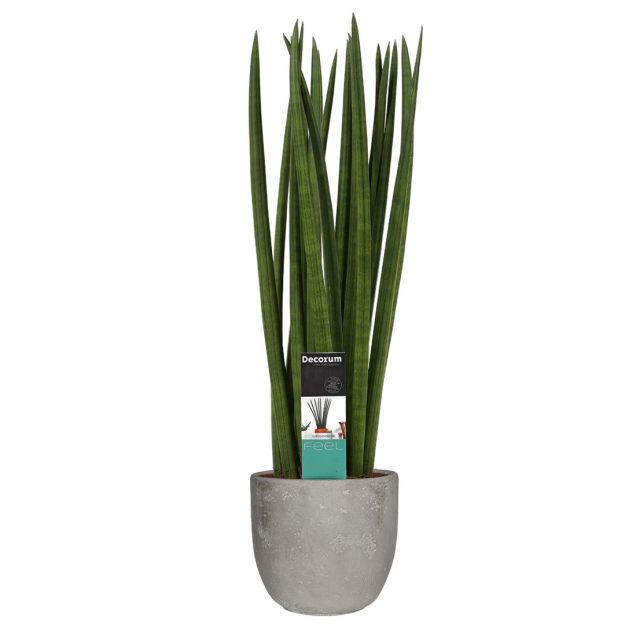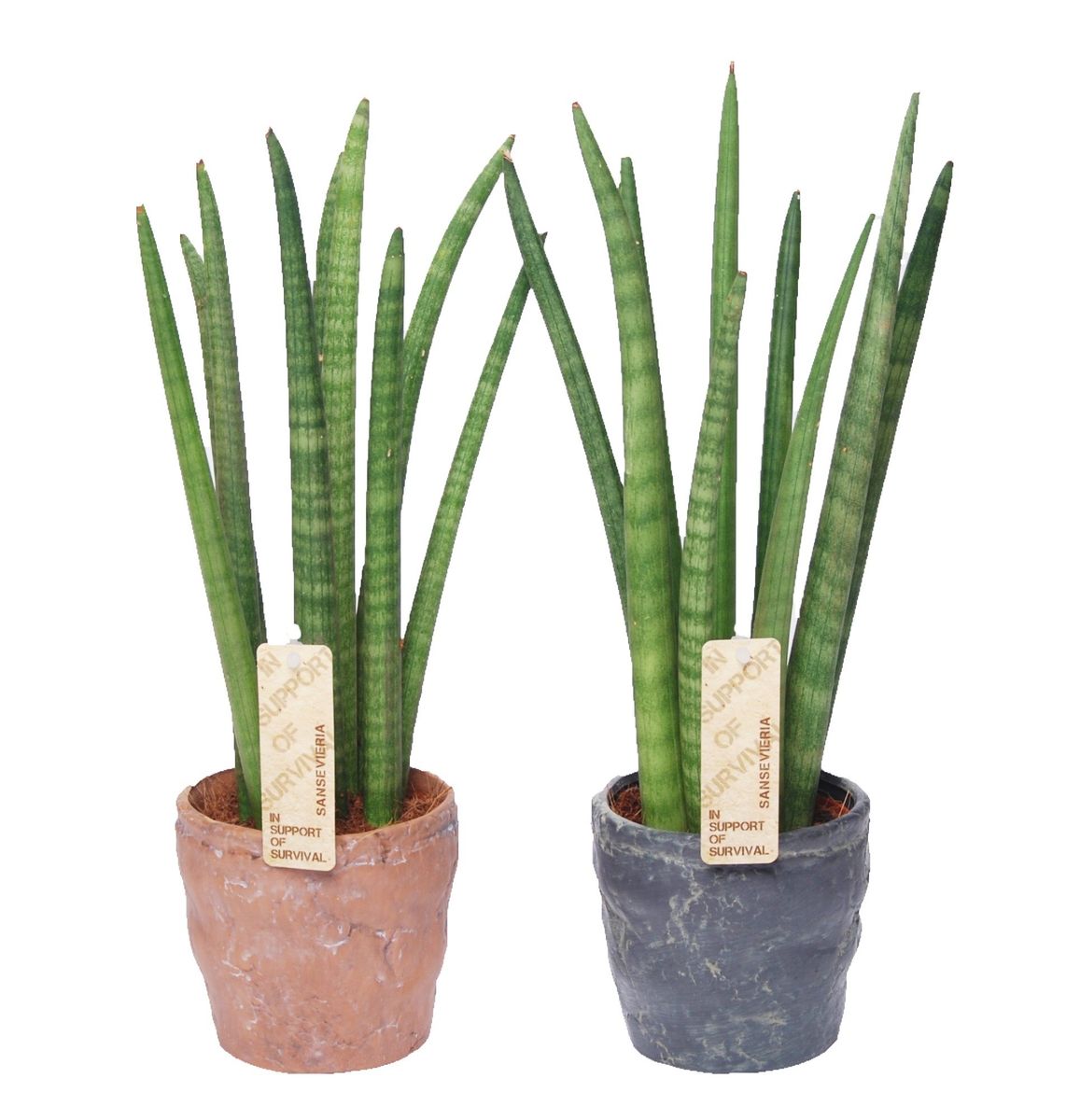
Sansevieria cylindrica 'Spaghetti' 15cm Sklep z roślinami CocaFlora
The Sansevieria cylindrica (African spear plant) is an unusual-looking succulent plant that grows thick cylindrical leaves. It is very low maintenance and thrives on neglect. This plant can survive indoors in low light, needs little water, and does not have many care problems, making it a great house plant..

Sansevieria Cylindrica Spaghetti Velvet Touchz® FloraStore
Sansevieria cylindrica 'Spaghetti': The 'Spaghetti' variety has long and slender leaves that curl and twist, resembling strands of spaghetti. Its unique form adds a touch of whimsy to any space. Sansevieria cylindrica 'Patula': This variety is characterized by its outward-growing leaves that bend slightly. The leaves have a subtle.
SANSEWIERIA Sansevieria cylindrica Spaghetti XXL 7587166997 oficjalne archiwum allegro
For Sansevieria cylindrica bright indirect sunlight is the best. Water every 2-3 weeks only. The temperature should be between 68 and 85 degrees Fahrenheit (20 and 29 degrees Celcius). Provide soil using succulent and cactus mix in a 1:1 ratio adding in some perlite and pumice. Humidity should be around 40%.
SANSEWIERIA Sansevieria cylindrica Spaghetti 43cm! 7587151779 oficjalne archiwum allegro
Water and Humidity. If the cylindrica has one weakness, it is overwatering. During the growing season, water it about once every two weeks. Be sure to water the soil and not the leaves. If the base of the stalks becomes yellow or swollen, it means you have overwatered.

Sansevieria cylindrica 'Spaghetti' Green Solutions
June 4, 2023 by Nancy Maffia. The Cylindrical Snake Plant, also known as the African Spear Plant ( Dracaena angolensis, formerly Sansevieria cylindrica ), is a succulent with rod-shaped, gray-green leaves. It is an easy plant for new gardeners because it is tough, adaptable to most household conditions, and seems to thrive on neglect.

Sansevieria cylindrica 'Spaghetti'
Stick your finger in the soil up to your second knuckle and if the soil is wet, wait a few days before watering. Another way to tell if the soil is dry is to check the leaves. If the leaves are wilting, the plant is thirsty and needs water. Ideal Temperature for sansevieria Cylindrica.

Sansevieria Cylindrica spaghetti Sansewieria wężownica P10 ERLI.pl
Sansevieria cylindrica plants come in several varieties, but I will discuss only a few of them below: 1. Sansevieria cylindrica 'Spaghetti' In this cultivar, the leaves are especially thin. 2. Sansevieria cylindrica 'Skyline' Compared to other cultivars, this one has large, erect leaves. 3. Sansevieria cylindrica 'Patula'

Sansevieria Cylindrica Spaghetti L in White Pot (0.22m) IM Garden Mart
Although the Sansevieria cylindrica specimens you'll find for sale at your local plant store tend to be small, this plant can actually grow very tall (up to around 6 feet!). Its leaves are slightly ribbed and usually have dark green, horizontal banding. They can reach over an inch in diameter.

Sansevieria cylindrica 'Spaghetti' 25cm Sklep z roślinami CocaFlora
Water the potting medium, taking care not to get water on the leaves, which will cause them to rot. If the leaves turn yellow, or get soft and mushy at their base, the plant is overwatered. Humidity: Average room (about 40% relative humidity) or lower. Snake Plants will tolerate dry air, but keep it away from air vents or drafts.

Sansevieria Cylindrica spaghetti Polana u Barana
The African spear plant (Sansevieria cylindrica), also known as the cylindrical snake plant, is a succulent that consists of upright, gray-green, subtly striped leaves.The leaves are cylindrical in shape but narrow to a point at their tips. When grown in optimal conditions, African spear plants might send up a long flower spike from their center that's full of tiny, delicate, white blooms.

Sansevieria Cylindrica Spaghetti 70 cm Cachepot inclus
Sansevieria cylindrica 'Spaghetti' A hybrid snake plant. This cultivar features hand-shaped, thin leaves. It features dark green leaves with striking light green tiger-print striping. Sansevieria cylindrica 'Skyline' Grows fan-shaped, this cultivar sports large, vertical erect round banded green leaves in clusters.

Sansevieria cylindrica 'Spaghetti' 15cm Sklep z roślinami CocaFlora
Description. Dracaena angolensis, formerly known as Sansevieria cylindrica, is a rhizomatous succulent with stiff subcylindrical green-gray leaves that alternate to form a fan-like shape. The leaves are up to 5 feet (1.5 m) tall, up to 1.2 inches (3 cm) in diameter, and taper to a sharp point. They are grey-green with horizontal dark green stripes.

Sansevieria cylindrica Spaghetti (P10,5 cm H35 45 cm) Planter Engros FlorAccess
There are various Sansevieria cylindrica varieties, including "Spaghetti," "Skyline," and "Patula.". This plant requires lots of light and loves a sunny location. During the summer, it can be placed outdoors. Water evenly and tolerate short dry periods. Maintain at least 60% humidity and a temperature around 68°F.

Sansevieria cylindrica 'Spaghetti' 15cm Sklep z roślinami CocaFlora
Dracaena angolensis, synonym Sansevieria cylindrica, also known as the cylindrical snake plant, African spear or spear sansevieria or in Brazil Saint Bárbara sword, is a succulent plant native to Angola. Formerly in the genus Sansevieria, it is now included in Dracaena.
Sansevieria cylindrica Spaghetti +DONICZKAXXL43 cm • Cena, Opinie • Rośliny doniczkowe
Sansevieria cylindrica, or African Spear, is quite resilient and can withstand a range of conditions. However, for optimal growth, it prefers bright, direct light and temperatures between 50 and 85 °F. The plant requires fast-draining soil and should be watered moderately, ensuring the soil dries out between waterings.
SANSEWIERIA Sansevieria cylindrica Spaghetti 45cm! 8546006074 oficjalne archiwum Allegro
How to propagate Sansevieria cylindrica. Dracaena cylindrica forms clumps, which can be easily divided to make new plants.Wait until the stems are around 10cm tall before simply removing the plant from its pot, gently separating a clump of stems from the main rootball, and then potting both clumps into pots with fresh, peat-free compost.